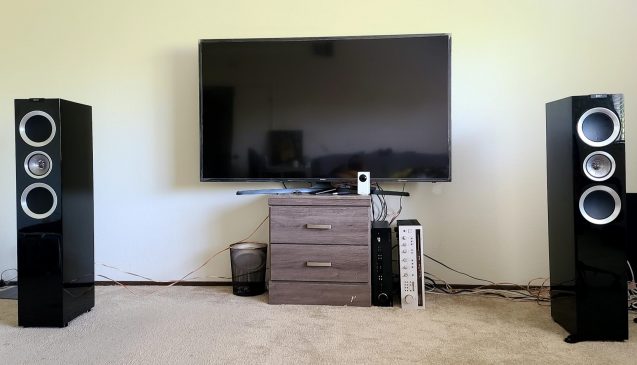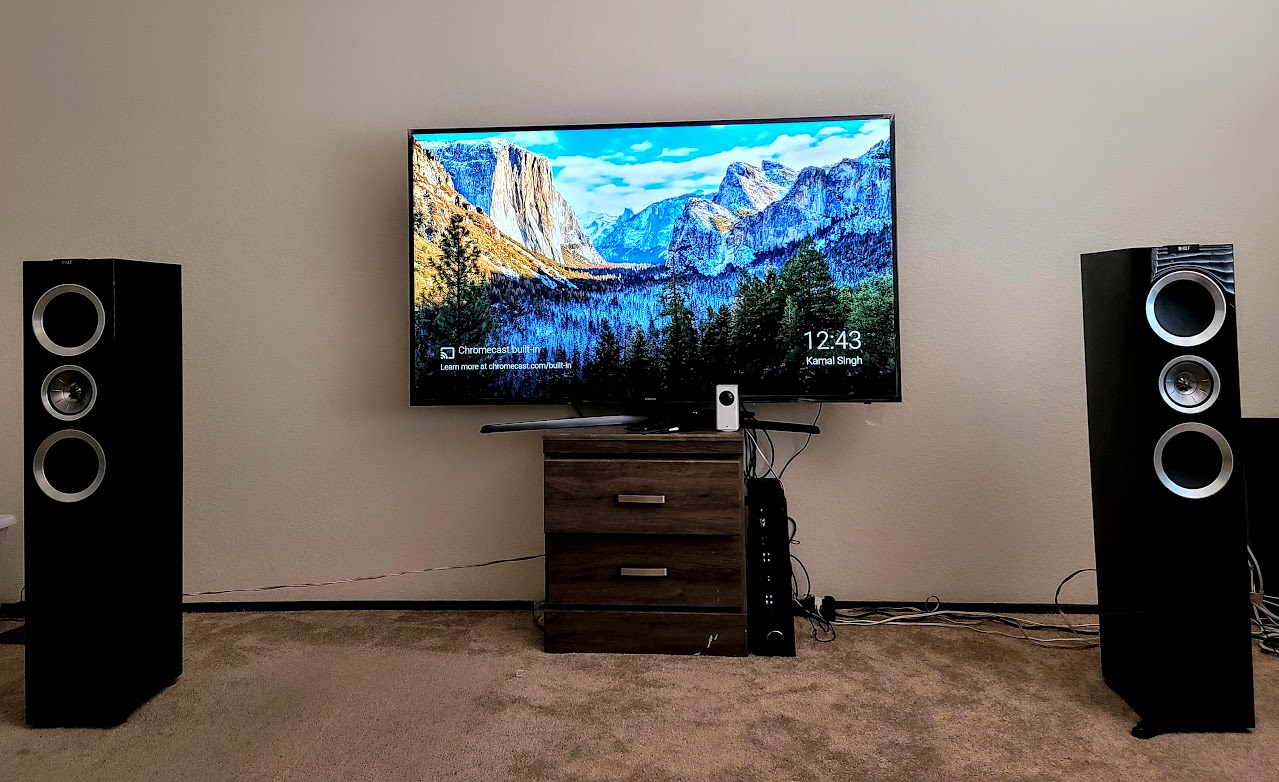Hi-Fi enthusiasts are often limited by the budget of their system. But making an affordable Audiophile level audio is easier than people anticipate. While we’ll have a separate guide for budget audiophile, this one is focusing on how you can bi-amp and profit from better Bass and more details from midrange and highs on a relatively smaller budget.
Some Audiophile grade speakers can be bi-amped. If your speakers have that capability, you can leverage it to produce amazing results especially if you don’t want to spend too much on expensive high-power amplifiers.
I was driving my used R700 with CXA80, which theoretically has enough power (120wattsPC for 4 ohms and 80watts per channel for 8ohms), but sub-bass was just not enough for my tastes. Setting the tone control to max for bass doesn’t produce sub-bass that I was looking for. It amplified more of 80-120hz bass by +5db, which sounds worse.
So I could do one of the below:
- Add some external dSP / tone controls do add more sub-bass
- Bi-amp with another amplifier that can boost bass
- Buy a super expensive power amplifier that can drive 200watts with good current rating.
#2 has way more return on investment for tiny bit of additional investment.

What you need
You need to buy two amplifiers that do one thing well:
- Speakers that are Bi-amping capable, these are generally two-way or three-way speakers with
- Double the wire length.
- Bass amplifier: An amplifier that can produce lower frequencies well, preferably has tone controls. Look for a vintage amplifier with decent power numbers. 40 watts+ for a bookshelf speaker and 60watt+ if you’ve capable floorstanders.
- Second amplifier needs to be good at midrange and highs. Power numbers can be anywhere between 10 to 40watts. You don’t need too much power from this amplifier. However, what you need is an amplifier with cleaner transparent production.
Bass amplifier
This amplifier doesn’t need to be a modern one. any vintage amp with good power rating should do the job pretty well. e.g. I used Harman Kardon HK795i thats rated at 70watts per channel and sells used on eBay for ~$60.
Second amplifier
This will depend on your tastes. if you love the old analog sound, get a tube-amplifier. If you like the modern sound, pick something like Cambridge audio CXA60 that goes for ~$400 used. Picking and matching this amplifier to your speakers is essential. e.g. if your speakers are bright e.g. KEF LS50, R300 go for a warmer sounding amplifier like Emotiva, Hegel, Naim, etc.

Speakers
Any biampable speaker is fine. Preferably it has a bigger bass driver if bass is what you’re after. I’ve KEF R300 and R700 (which I got good deal on). Other good biamping capable speaker include Klipsch RP-600M, Reference series, Monitor audio Silve, Gold, platinum lines, Revel perfoma3, and several other speakers from Definitive Tech, B&W etc
Setup
Setup is simple. Your DAC output goes into both the amplifiers, and both amplifiers power a port on each speaker. Amp 1 connects to lower frequency port and Amp2 connects to midrange and highs. In my case Im using CXA80’s DAC and using pre-out to analog-in in HK795i, that way controlling volume on CXA80 from remote changes volume on both equally.
I’m using R700 as speakers and HK795i for bass (since it has bass controls) and CXA80 for midrange UniQ driver.

Results
Results are excellent, without breaking the bank. Bass is deep, tight and powerful. I can hear 40-60hz loud and clear, without sacrificing details and smoothness in mid-range and highs.
I’ve heard my KEF R700 speakers with an amplifier that’s 4x times the cost (Rega Elicit-R) and I think I’ve better and more fuller bass reproduction just by picking dedicated amps for different frequencies.
It is incredibly more important to have clarity, soundstage and composure in mids and higher frequencies that bass that you can getaway with it in lower frequencies even if they’re imprecise. Bass can be slow to react in certain amplifiers, though HK795i did a great job at it.
Most of my listening is at lower volumes where a normal stereo amp just doesnt cut in lower frequencies. One has to really turn the volume knob to get bass moving. You can move speakers closer to wall to improve amount of bass but also make it muddy. I think I did hit a perfect spot with this combo.
Other things to try:
Among other things I tried, I had used a Marantz AV receiver in normal and biamp config. It just doesn’t make the cut. AV receivers are mostly way inferior that stereo amps at even double the price. I also used a friend’s Sherwood vintage tube amp (~10watts per channel) to power mids and high. It sounded way more analog with slightly rolled-off and smoother highs. 10 watt may not sound much but its more than enough for mids and highs. If you love the analog smoothness, vintage tubes a must try and it’s better bang for buck at ~$200 in used market.
I’ve seen others using different wires for different frequencies, but I’m not going there. This is already an amazing result for the money and time invested.
Although I did ear-base non-scientific level-matching, proper level-matching may result in even better experience. It’s a good idea to explore that. Unfortunately that topic is out of scope of this post.
Budget of my setup
(All equipment was acquired used, prices includes shipping and taxes)
KEF R700 – $850 (scratched unit)
KEF R300 – $600 (I acquired for $350 and repaired one of the woofers)
Cambridge audio CXA60/CXA80 $400 each (used, good condition)
HK795i $50 (I acquired them free though)
So with R300 setup costs $1050 and with R700 $1350, not bad for a system that can outperform anything below $3000. Of course, you can be creative and pick a cheaper vintage amplifier and save even more.
Do you’ve Budget audiophile experience or tip? Share it with us in comments.
loading...
loading...

